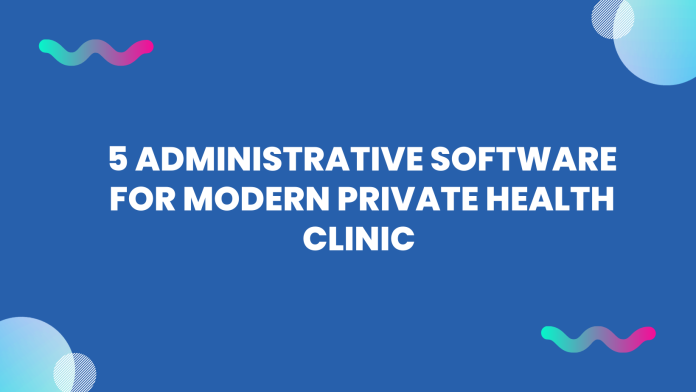Health clinics are the gateway to delivering healthcare services. And usually, patients visit these small clinics for check-ups. In addition, the number of patients is also higher.
Because most of the population exists in rural areas in major countries of the world. And on the contrary, there is no presence of hospitals in rural areas. In that circumstance, private health clinics are the only option left for patients.
However, private health clinics play a significant role in healthcare. These private health clinics fulfill the gap in care delivery in rural areas. And for future-oriented healthcare.
We need to upgrade these health clinics with tech facilities that make care delivery hassle-free and several other technologies that can automate healthcare workflow such as administrative tasks.
Although, utilizing technology in health clinics can change the whole patient journey and that could be the initial step in making digital health.
So we are here to address this solution. How can healthcare professionals utilize this software in their clinic to improve the patient journey as well as increase business revenue.
Let’s get started…
What is administrative software?: How can it help doctors?
General administrative software is used to only store patient data and keep a track record of their medical history. But that is not enough for medical staff. A lot of other administrative tasks are fulfilled in paperwork such as billing, reports, and so on.
On the other hand, healthcare professionals need to spend their major time collecting data from laboratories for several medical tests and x-rays which do not allow them to consult more patients per day.
As a result, this administrative software combines major tasks under one roof with automation. By using this software doctors can easily access their patient data such as medical history, test reports, x-rays, and so on.
Similarly, all the administrative tasks of a hospital and clinics can be operated under one system. It also streamlines the process hassle-free. And decrease the burden of administrative tasks on medical staff as well.
5 administrative software for medical clinic
This software is mostly used in the medical clinic for administrative tasks and patient management.
#1 Medical office software
Medical office software is widely used software. It brings all the stakeholders under one umbrella such as patients, vendors, medical staff, and caregivers.
In addition, all the operational and administrative tasks can be handled using this software. It makes it easier for admin staff to just operate one system. These lead to the optimized workflow of your medical clinic.
Benefits of using medical office software:
- No need to manage paper and excel
- No need to call anyone
- No need to send faxes
- No need to manage the task
- No need to book an appointment manually
- No need to manage the patient’s medical history
- No need to organzaie document
- No need to manage staff
#2 Patient engagement software
Patient engagement software allows healthcare professionals to manage their patients. However, allowing the patient to access their health data online becomes convenient for medical staff to cut down on several time-consuming tasks.
The staff has no need to call and pass on the information. A patient can easily view their details such as instructions from doctors and e-prescriptions from anywhere similar to telehealth, which increases engagement in their care.

However, through a patient portal, a patient can update their information by themselves. For instance, scheduling their appointment calendar.
Let’s explore the benefits of using patient engagement software…
Benefits of using patient engagement software:
- Handle patient document management
- Real-time notification
- Automate booking appointment
- Patient intake form
- Notify via SMS and emails
- Auto-refill of medication
- A real-time reminder of an appointment
- Chat with doctors and caregivers
- Online payments
- Access to medical records
#3 Medical billing software
Most health clinics outsource their billing services as they do not have enough staff to carry out the task, and paying them can increase their operating expense.
As a result, medical billing software practices efficiently handle their billing tasks in-house rather than outsourcing. With its help, the process of billing becomes a matter of a few taps.
The software automatically submits claims to the payers, accepts the payment from them, and analyzes the data that helps to evaluate the fiscal number and create a broad report.
Benefits of using medical billing software:
- Decrease the operating expense
- Easy to claim payment
- Track all billing records
- hassle-free payment including credit card
- Insurance verification
- Patient statement
- Paperless claims
- Automate billing process
#4 Appointment scheduling software
For medical staff, it’s exhausting to waste their time booking appointments manually over phone calls even though they have technology nowadays.
Similarly, for patients, it is overwhelming to book an appointment, first, call a receptionist, call on hold, pass on the information, decide booking date, and then schedule an appointment.

On the other hand, medical staff accept calls, ask for details, enter every detail, book appointments, and reminder calls.
This typical process no longer exists in many clinics, with the use of technological tools such as appointment scheduling software it becomes easy for healthcare professionals to automate the process.
Benefits of using appointment scheduling software
- Accept booking from multiple channels
- Patient intake form
- Allow patient to check real-time availability
- Two-way calendar sync
- Automate booking confirmation and reminders
- Canceling and rescheduling
- Live chat option
- Allow doctors to check the EHR of patients before consulting
- Payment facilities
#5 Inventory management software
Managing inventory is a complex process in medical clinics. Making sure that several supplies of medical equipment and pharmaceutical samples are available and stored is challenging.
A good example is during the COVID-19 healthcare was more challenging than ever, most hospitals and clinics were facing low supply and high demand issues. The clinic and hospitals were facing medical equipment shortages.
As a result, with the use of inventory management healthcare firms can manage their inventory and fulfill their requirements.
Benefits of using inventory management software:
- Manage inventory
- Provide analytical data
- Make a flexible supply chain
- Check real-time availability
- Easy to access
- Send an alert in case of low inventory
- Automate the refill of inventory
Final words
Although, the adoption of digital health facilities can make care delivery more hassle-free and accessible to everyone.






